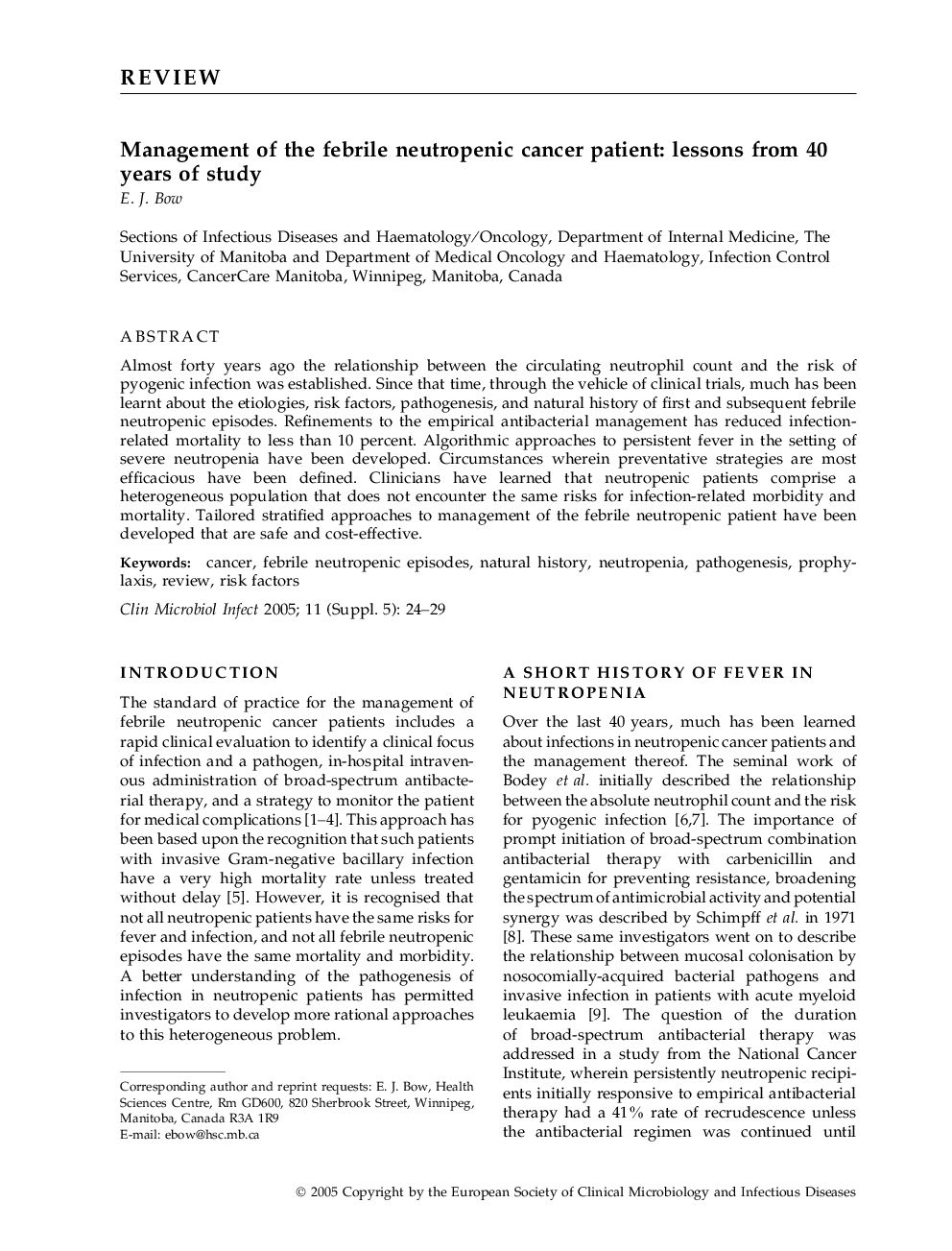| Article ID | Journal | Published Year | Pages | File Type |
|---|---|---|---|---|
| 9275499 | Clinical Microbiology and Infection | 2005 | 6 Pages |
Abstract
Almost forty years ago the relationship between the circulating neutrophil count and the risk of pyogenic infection was established. Since that time, through the vehicle of clinical trials, much has been learnt about the etiologies, risk factors, pathogenesis, and natural history of first and subsequent febrile neutropenic episodes. Refinements to the empirical antibacterial management has reduced infection-related mortality to less than 10 percent. Algorithmic approaches to persistent fever in the setting of severe neutropenia have been developed. Circumstances wherein preventative strategies are most efficacious have been defined. Clinicians have learned that neutropenic patients comprise a heterogeneous population that does not encounter the same risks for infection-related morbidity and mortality. Tailored stratified approaches to management of the febrile neutropenic patient have been developed that are safe and cost-effective.
Related Topics
Life Sciences
Immunology and Microbiology
Microbiology
Authors
E.J. Bow,
